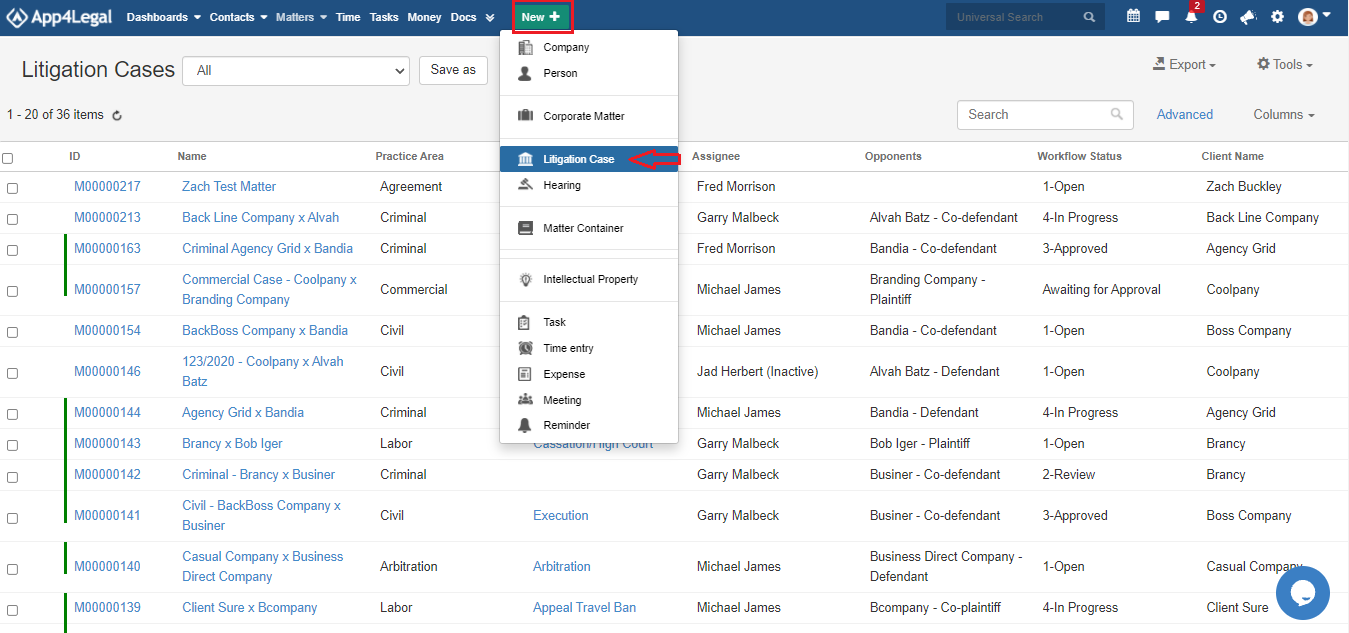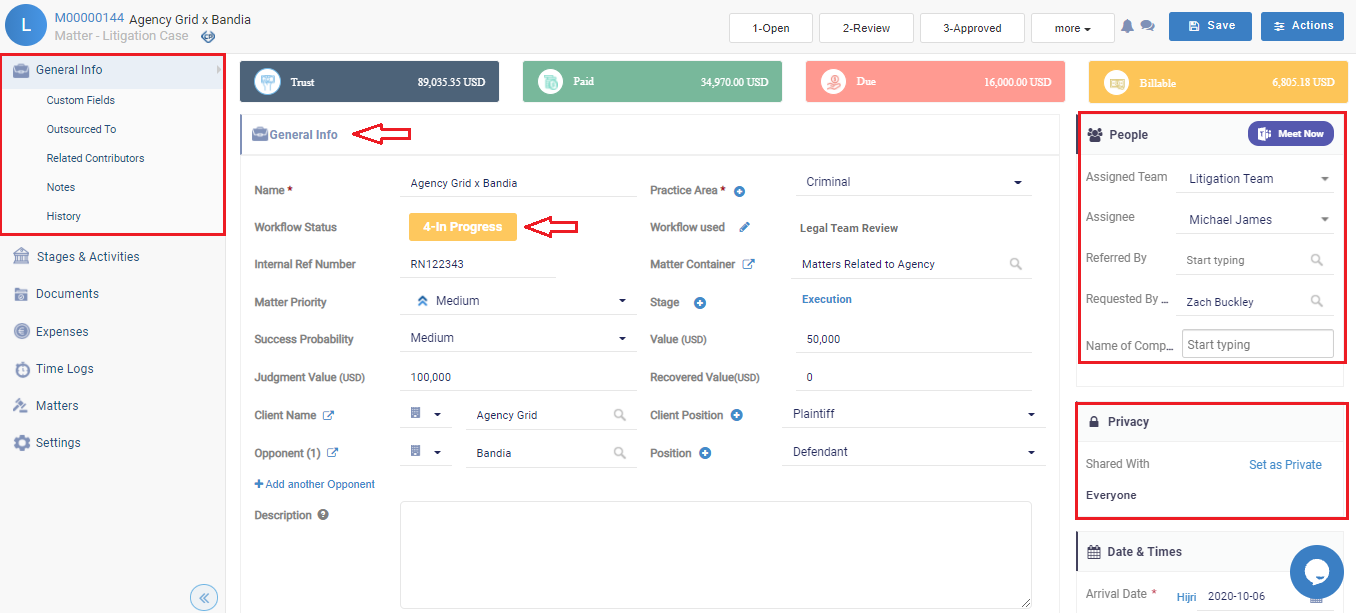Objectives
- Insert a Litigation case in the data base
- Correct/Revise/Update data related to an existing Case
- Capture and manage a Litigation Case’s details
Environment
- Litigation Case Module
Additional Information
The Litigation Case Module also allows you to
- Add a new Litigation Case
- Capture & Manage Case Details (Custom Fields, Outsourcing to Lawyer, Related Contributors)
- Manage Litigation Stages
- Manage Activities ( Hearings, Tasks, Events, Reminders)
Procedure
In this document (video) we will cover the Litigation Case operations Management - from capturing cases main details such as litigation stages, activities including hearings, tasks, documentation, expenses, time logs and so on. This will help you organize and collaborate on litigation cases.
To Manage Litigation cases In App4Legal, you first have to add Litigation Cases to your database. You do that through the quick add button located in the main menu.
There are 3 required fields:
- Name: Name of the matter, best practice is to enter information that will make this Matter easier to search for later on.
- Practice Area: A customizable drop-down list to define the related area of practice for this case such as Criminal, Financial, Civil, Labor, Real Estate and so on.
- Arrival Date: The Arrival date is when this case reached your office, by default, it takes the current date.
Other fields are optional; however, you can fill out these fields to make it easier to generate reports at a later stage. Optional fields include the description, client position, opponent, opponent position, requested by, assignee and so on.
Once you’ve added your Litigation Case, you can now manage all related information.
You can start by using the advanced filters that will help you search for Litigation case based on criteria of your selection. For example, you can search for Litigation case by Assignee.
You can click on the Case’s name or ID to open its page and edit or capture more information. You can capture general information, workflow status, people and so on.
Under the General info you can Add details or update existing ones. Moreover, you can always use Custom Fields If there’s any additional information you wish to capture and we don’t have a field for it, you can create a Custom Field, give it a name and a type.
For efficient collaboration you can outsource this matter to external Legal Practitioners and If there is anyone else working on this Litigation case you can mention them in related contributors.
Additionally, use notes to keep a track of all the noteworthy updates related to this Litigation case. You can always use App4Legal add-ons for outlook and Gmail to log emails with attachments as Matter Notes on the fly.
You can also manage the litigation case operations through the litigation stages and activities tab that includes the different Litigation Case stages with the associated hearings, events, tasks and reminders related to the stage. The information includes court type, court region, client position and so on.
Last but not least, you can assign tasks to related advisors, manage the Folder structure and Upload Documents through the related documents Tab and Record expenses and time logs related to the case. You can link a Litigation Case to an existing matter in App4legal. And you can use the Settings Tab to Change the users rates, matter rate, capping and partners percentage of this Litigation case. .









This page has no comments.